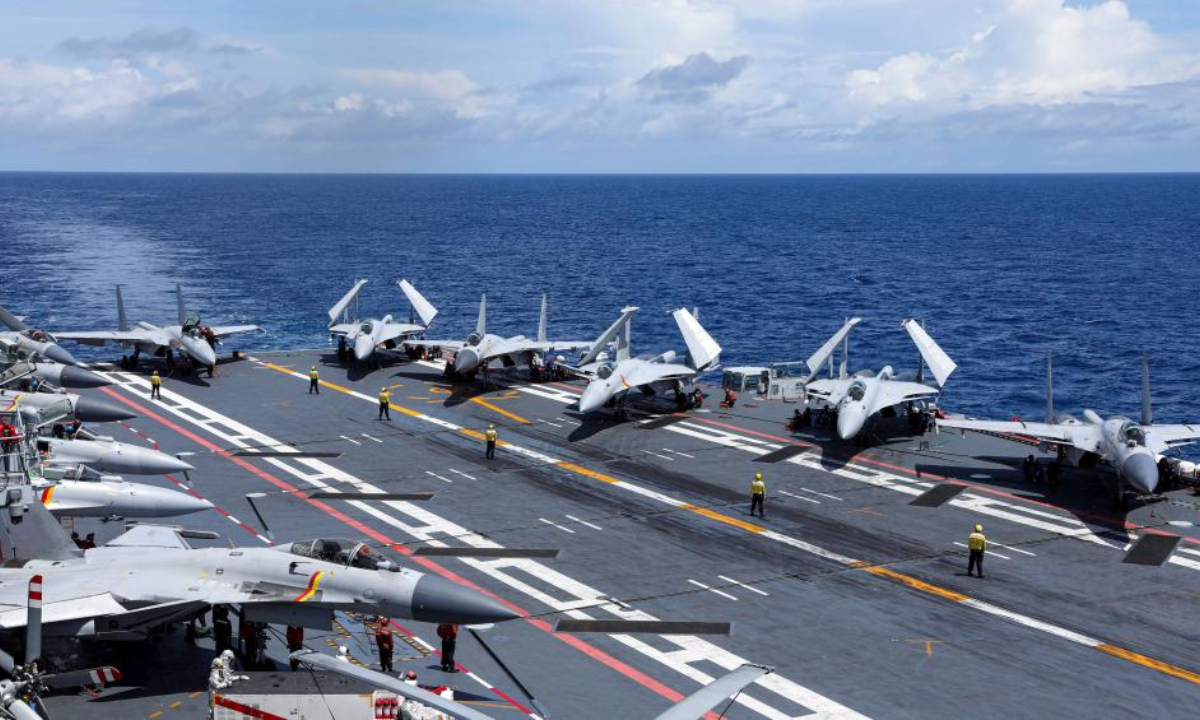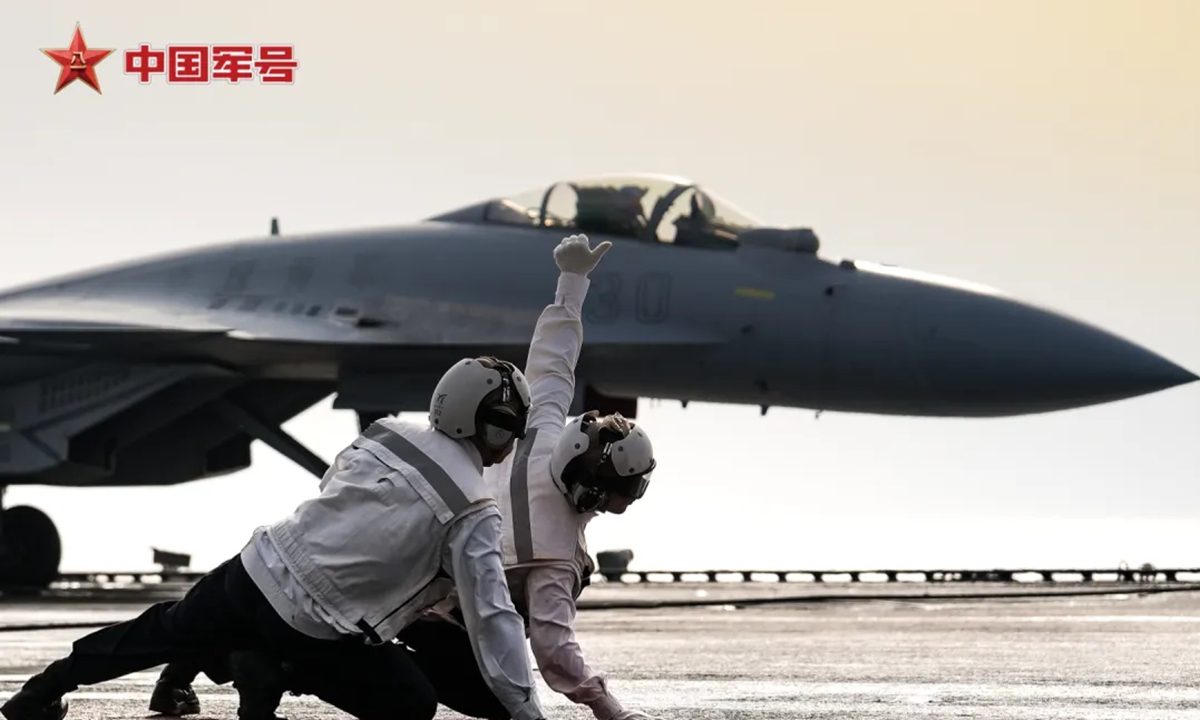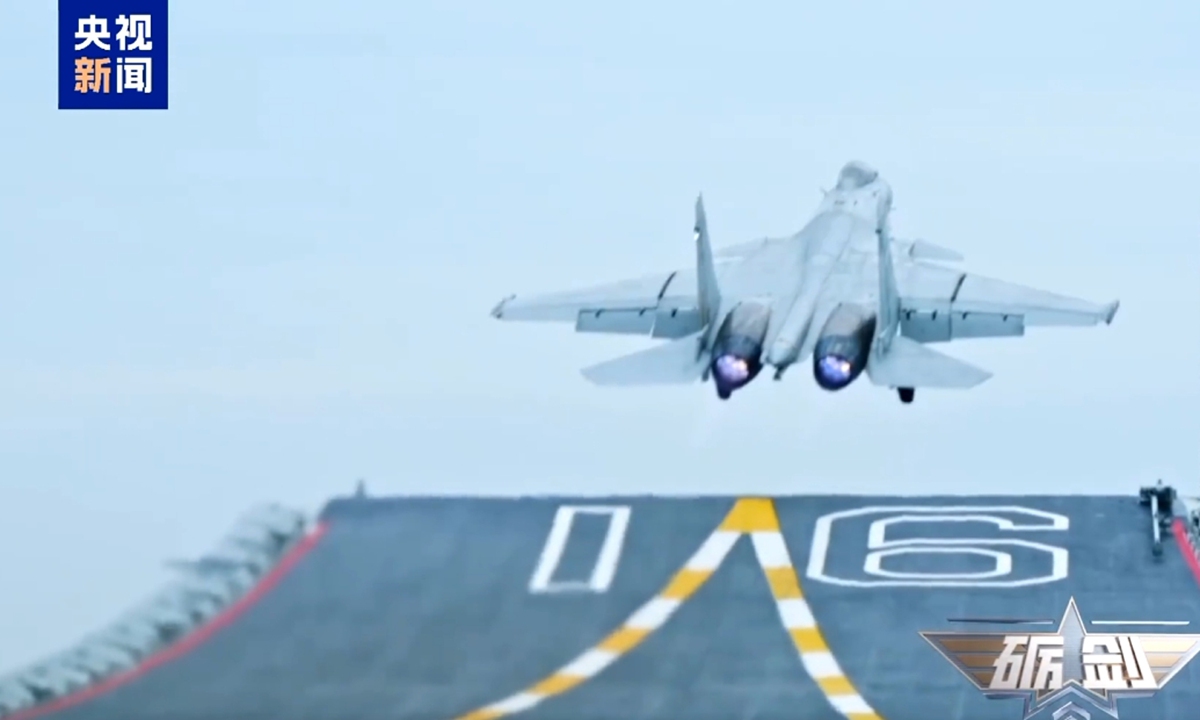'Acting as opposing forces' first mentioned in China's dual carrier drills, shows expansion of China’s maritime defense capabilities: experts

The carrier-based aircraft line up on the deck of the Shandong aircraft carrier during a far seas combat training by the Liaoning and Shandong aircraft carrier formations of the Chinese People's Liberation Army (PLA) Navy in 2025. Photo: Xinhua
The Liaoning and Shandong aircraft carrier formations of the Chinese People's Liberation Army (PLA) Navy recently completed their far seas combat training and returned to port, Xinhua News Agency reported on Monday.
According to Xinhua, during the training, the Liaoning and Shandong carrier formations conducted operations in the Yellow Sea, the East China Sea, the South China Sea and the Western Pacific, coordinating with relevant military arms and branches to conduct realistic combat drills where they acted as both opposing forces and support units.
The two aircraft carrier formations adhered to principles of combat readiness, joint operations and systematic training during the drills, Xinhua reported. The exercise included reconnaissance and early warning, defense and counterstrike, maritime assault, air defense, and cross-day-night tactical flight operations of carrier-based aircraft.
This follows the first joint exercise of dual aircraft carrier formations in 2024, marking another instance of conducting systematic confrontation exercises in the open ocean, Xinhua reported. It also marked the first time that China publicly stated its two aircraft carrier formations coordinated with relevant military arms and branches to conduct realistic combat drills where they acted as both opposing forces and support units.
“Acting as both opposing forces and support units means that our two aircraft carrier formations possibly engaged in combat against each other as red and blue forces. Coordinating with relevant military arms and branches showed the characteristics of joint operations,” Zhang Junshe, a Chinese military affairs expert, told the Global Times on Monday.
Zhang said the relevant remarks implied that the joint training of the two carrier battle groups may have also involved fighter jets from the air force, which supported and coordinated operations with carrier-based aircraft formations to strike maritime and aerial targets, or to conduct air superiority operations and interception operations.
The simultaneously released videos of the far sea combat training showed J-15 carrier-based aircraft conducting day-night takeoffs and landings, as well as scenes of the Type 055 10,000-ton-class destroyer Yan'an cruising through the ocean and the Type 901 comprehensive replenishment ship Chaganhu replenishing the Shandong aircraft carrier. These visuals highlighted the systemic combat capabilities of China's aircraft carrier formations.
A military affair expert told Global Times on condition of anonymity that aircraft carrier battle groups play a significant role in China’s systemic combat capabilities, while simultaneously being an independent operational unit. The far sea combat training also validates the capability of China's aircraft carrier battle groups as independent operational systems in combat against relevant military forces.
“We cannot rule out the possibility of engaging in confrontations with enemy aircraft carrier battle groups in far sea in the future. As a powerful weapon system, an aircraft carrier needs to handle various unexpected situations once it is tasked with missions in far seas. It must rely on its systemic combat capabilities to respond to emergencies, even threats posed by foreign aircraft carriers, which is an important manifestation of its combat capability, support capability, and survivability,” the expert noted.
According to Xinhua, during training, foreign military vessels and aircraft conducted multiple close-in reconnaissance, tracking and surveillance attempts. The Chinese formations maintained combat status while on high alert throughout the course, organized multiple combat sorties of shipborne aircraft and professionally dealt with all scenarios.
Compared to the first exercise of the Liaoning and Shandong aircraft carrier formations, this time the formations not only operated in the Yellow Sea, East China Sea, and South China Sea, but also expanded their operations to the Western Pacific.
According to previous reports from Japan's Ministry of Defense, the Liaoning carrier group was reported to have been located 300 kilometers southwest of the Minamitorishima Island in early June, which indicated that the formations’ trajectory exceeded the so-called second island chain identified by the US military.
Zhang said that the Liaoning and Shandong carrier formations' maneuvering to the Western Pacific for confrontation exercises represents a highly proactive signal. “Based on the publicly disclosed training subjects, the drills not only trained the carrier formations' aerial defense capabilities but also their strike capabilities against enemy carrier formations, revealing that our military's carrier formation's offensive and defensive capabilities have expanded to more distant areas,” Zhang said.
“This far sea combat training conducted by the two aircraft carrier formations extended our defense perimeter outward, indicating an enhancement of our capability to defend beyond our borders and the expansion of our maritime defense operations' depth,” Zhang said.



